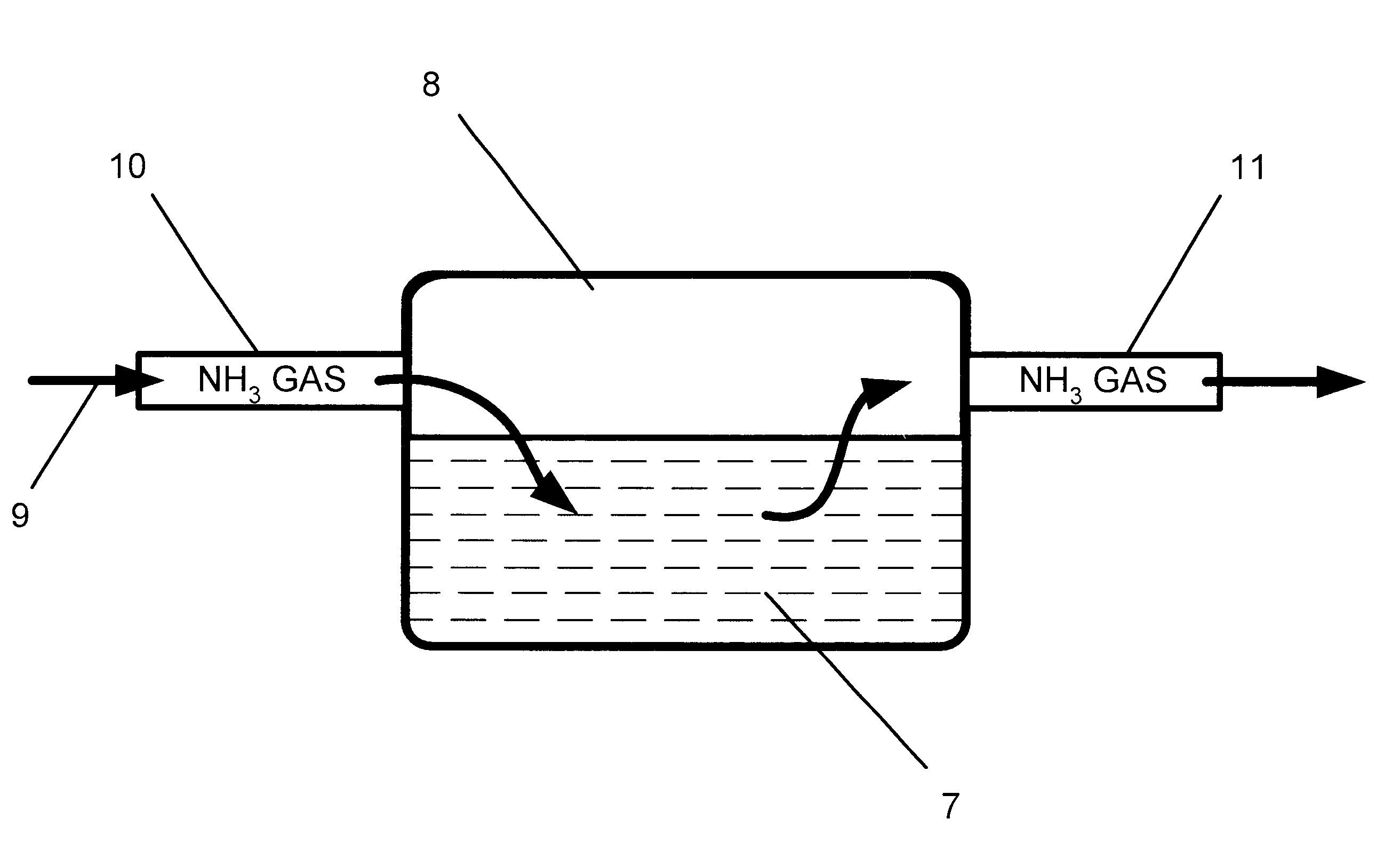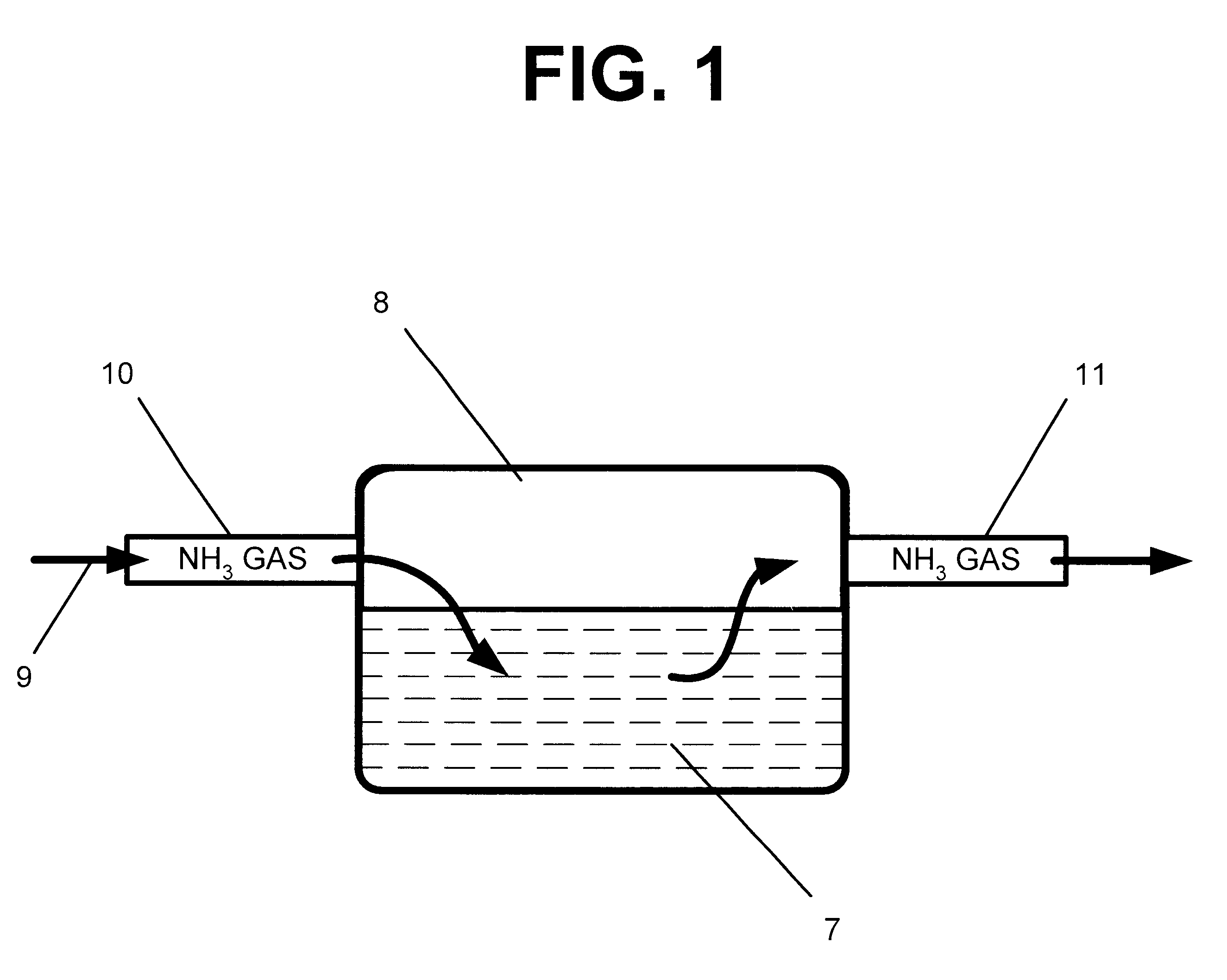Method of treating commercial grade products to remove undesirable odors and flavors
a commercial grade and odor-free technology, applied in the field of methods, can solve problems such as affecting the taste and/or smell of products, and achieve the effect of reducing the risk of contamination
- Summary
- Abstract
- Description
- Claims
- Application Information
AI Technical Summary
Problems solved by technology
Method used
Image
Examples
example 2
A commercial grade sample containing approximately 17% potassium sorbate and 83% calcium propionate was prepared using the gas phase technology of the present invention. This sample initially had a distinctive off-odor and off-taste. The sample was exposed to ammonia gas in the same manner described above in Example 1 to convert the free acids in the sample to ammonium salts. The resulting sample had no detectable off-odor or off-taste.
The sample was then used at the rate of approximately 1% by weight to treat flour tortilla dough prepared using the following recipe: 454 g flour, 45.4 g vegetable oil, 9.08 g double baking powder, 9.08 g salt, 191.08 g tap water at 110.degree. F., 4.54 g yeast, 0.09 g sugar, and 3 g citric acid. A control batch of flour tortilla dough was prepared following this same recipe, without adding any antimicrobial compound. The dough from both the treated batch and the control batch was measured into 40 g balls, which were flattened and cooked on a hot grid...
PUM
 Login to View More
Login to View More Abstract
Description
Claims
Application Information
 Login to View More
Login to View More - R&D
- Intellectual Property
- Life Sciences
- Materials
- Tech Scout
- Unparalleled Data Quality
- Higher Quality Content
- 60% Fewer Hallucinations
Browse by: Latest US Patents, China's latest patents, Technical Efficacy Thesaurus, Application Domain, Technology Topic, Popular Technical Reports.
© 2025 PatSnap. All rights reserved.Legal|Privacy policy|Modern Slavery Act Transparency Statement|Sitemap|About US| Contact US: help@patsnap.com


